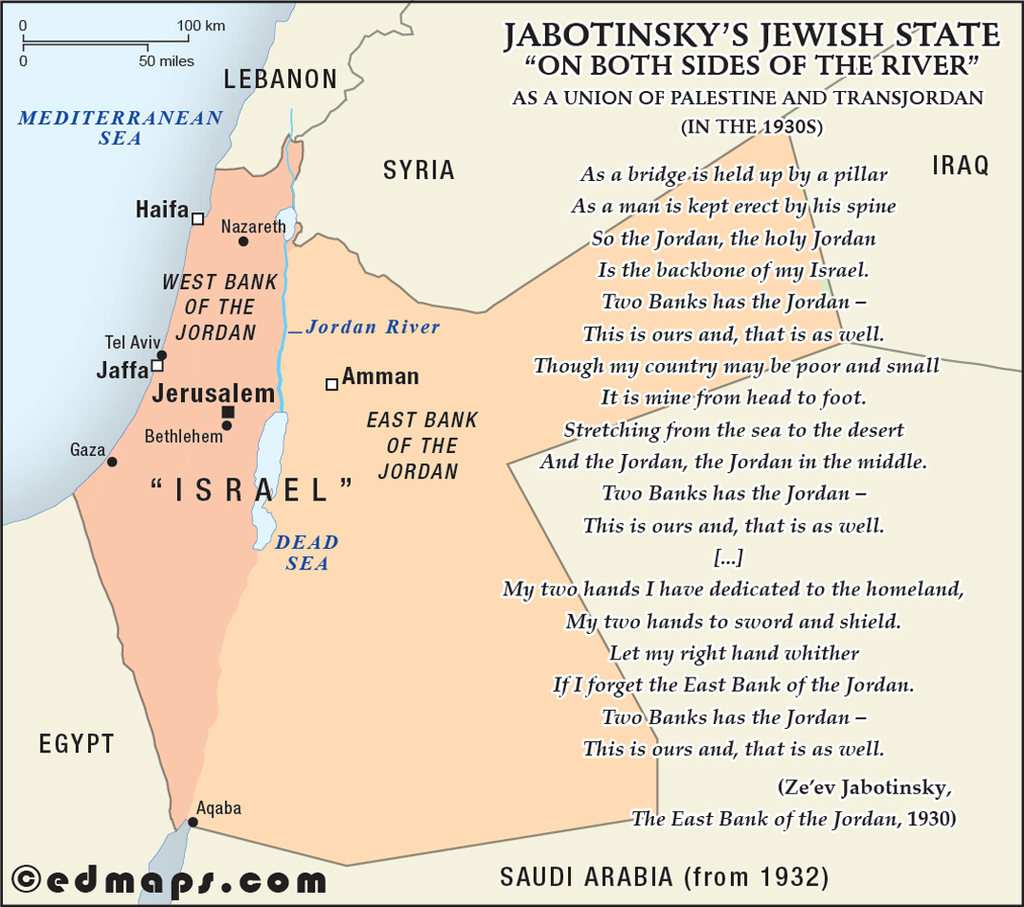
Ze'ev (Vladimir) Jabotinsky's Revisionist Zionism presented the most expansive territorial vision within the Zionist movement, claiming both banks of the Jordan River as the Jewish national home. Through his 1929-1930 poem "East Bank of the Jordan" and his political declarations, Jabotinsky articulated a maximalist program that fundamentally challenged Britain's partition of the Palestine Mandate and confronted seemingly insurmountable demographic realities. His "Iron Wall" doctrine proposed military force as the solution to Arab opposition, prioritizing power over compromise in pursuit of sovereignty across approximately 46,000 square miles—a vision that would profoundly influence Israeli right-wing politics while raising enduring questions about the relationship between nationalist aspiration, territorial claims, and the rights of existing populations.

Ze'ev (Vladimir) Jabotinsky's 1929-1930 poem "East Bank of the Jordan" powerfully articulated Revisionist Zionism's territorial maximalism, transforming the Jordan River from a boundary into a symbol of national aspiration. The poem declared that both banks belonged to the Jewish national home, poetically expressing what Jabotinsky had stated politically at the 1929 Zionist Congress: "What does the word Palestine mean? Palestine is a territory whose chief geographical feature is this: that the River Jordan does not delineate its frontier, but flows through its center." This geographical assertion fundamentally challenged conventional understandings of Palestine's boundaries, claiming Transjordan as inseparable from the Zionist project.
Jabotinsky's territorial demands encompassed approximately 46,000 square miles, including what would become Israel, the West Bank, Gaza, and the entire Hashemite Kingdom of Jordan. This vast expanse directly contradicted Britain's 1921 administrative separation of Transjordan from the Palestine Mandate, which Revisionist Zionists considered an illegitimate amputation of Jewish national territory. Jabotinsky invoked historical claims to ancient Israel's biblical kingdoms, which had extended eastward across the Jordan, arguing that modern Zionism's legitimacy derived from restoring Jewish sovereignty to its complete ancestral homeland. The poem gave emotional resonance to these territorial claims, making the East Bank not merely a political demand but a passionate nationalist yearning.
The demographic implications of establishing a Jewish state on both banks were formidable. By 1930, the combined Arab population of Palestine and Transjordan exceeded 850,000, vastly outnumbering the Jewish population of approximately 165,000. Achieving Jewish majority status across such territory would require massive immigration and raised profound questions about the fate of existing Arab inhabitants. Would they accept minority status? Could they be politically integrated while maintaining Jewish national character? These questions remained largely unaddressed in Jabotinsky's vision.
Jabotinsky's "Iron Wall" doctrine provided his strategic answer to these territorial-demographic challenges. He argued that Arabs would never voluntarily accept Zionist sovereignty over any portion of Palestine, let alone its entirety including Transjordan. Arab opposition was not negotiable through compromise or partition but only through overwhelming Jewish military superiority. The iron wall of Jewish force must render Arab resistance futile before territorial arrangements could be finalized. Only after Arabs recognized the impossibility of preventing Jewish statehood would discussions about borders, political rights, and coexistence become meaningful.
This framework deliberately postponed defining final boundaries, placing military dominance before diplomatic settlement. Jabotinsky rejected the incrementalism of Labor Zionism, which favored establishing facts on the ground through gradual settlement. Instead, he demanded immediate assertion of maximal territorial claims backed by force. The poetic imagery of the Jordan River flowing through Palestine's center was not merely geographical description but political program: Jewish sovereignty must extend wherever historic Palestine could be defined, encompassing both banks as an indivisible unit.